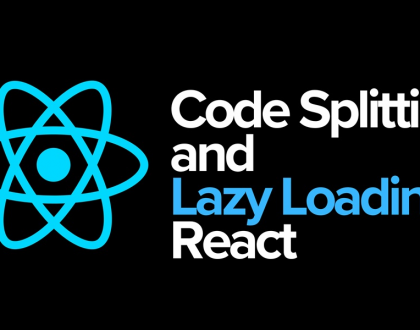State Management in React: Context API vs Redux

Introduction
State management is one of the most crucial aspects of modern React applications. It helps ensure that your application remains organized and predictable, particularly as it grows in complexity. There are several ways to manage state in React, with the two most popular approaches being the Context API and Redux. Both have their advantages and use cases, but deciding which one to use in your React application can be challenging. In this post, we’ll explore the differences between Context API and Redux, and help you choose the right solution for your needs.
What is State Management in React?
State in React refers to data that can change over time, and it directly influences the behavior and rendering of components. Managing state efficiently is essential in any React app, especially when dealing with complex interactions between multiple components or pages. React provides several ways to handle state, from simple local component state to more global approaches like the Context API or Redux.
What is the Context API?
The Context API is a built-in feature of React that allows you to share data between components without having to pass props down manually through every level of the component tree. It provides a way to globally manage state and can be a simpler alternative to Redux for many use cases.
The Context API consists of three main parts:
- React.createContext(): Creates a Context object.
- Provider: The Provider component makes the context value available to all child components.
- Consumer: The Consumer component allows components to access the context value.
When to Use Context API
- Simple Global State: If you need to share simple state across multiple components (such as theme settings or user authentication), the Context API is a great option.
- Small to Medium-Scale Applications: The Context API works best in smaller or medium-sized applications where you don’t need complex state management or many actions to modify the state.
- Less Boilerplate: The Context API requires less code and setup compared to Redux, making it easier to implement for smaller projects.
Example of Using the Context API
// CreateContext.js
import React, { createContext, useState } from 'react';
export const ThemeContext = createContext();
export const ThemeProvider = ({ children }) => {
const [theme, setTheme] = useState('light');
return (
{children}
);
};// App.js
import React, { useContext } from 'react';
import { ThemeContext } from './CreateContext';
const ThemedComponent = () => {
const { theme, setTheme } = useContext(ThemeContext);
return (
The current theme is {theme}
); };
const App = () => (
);
export default App;
In this example, ThemeContext is created, and its value (the theme) is provided to the components in the component tree using the Provider. The useContext hook is used to access the theme in the ThemedComponent.
What is Redux?
Redux is an open-source state management library that provides a more robust solution for handling global state. It works well for large-scale applications that require predictable state management across many components.
In Redux, state is stored in a single store that holds the application’s entire state, and changes to that state are made through actions and reducers.
Key Concepts of Redux:
- Store: A centralized location that holds the entire application state.
- Actions: Plain JavaScript objects that describe what happened in the application.
- Reducers: Functions that handle changes to the state based on actions.
- Dispatch: The function that sends actions to the store.
Redux also includes middleware like redux-thunk or redux-saga for handling side effects, such as asynchronous operations (e.g., fetching data from an API).
When to Use Redux
- Complex State Management: If your application has complex state or multiple actions affecting the state, Redux may be a better fit due to its powerful state-management structure.
- Large-Scale Applications: Redux is especially useful for large applications with many components that need access to the same state or need to interact with one another.
- Predictable State Flow: Redux’s predictable state flow makes it easy to debug and test, which is valuable for large applications with many moving parts.
- Integration with Other Libraries: Redux integrates well with many third-party libraries and tools, making it highly flexible for larger applications.
Example of Using Redux
// actions.js
export const toggleTheme = () => ({
type: 'TOGGLE_THEME',
});
// reducer.js
const initialState = {
theme: 'light',
};
const themeReducer = (state = initialState, action) => {
switch (action.type) {
case 'TOGGLE_THEME':
return { theme: state.theme === 'light' ? 'dark' : 'light' };
default:
return state;
}
};
export default themeReducer;
// store.js
import { createStore } from 'redux';
import themeReducer from './reducer';
const store = createStore(themeReducer);
// App.js
import React from 'react';
import { useDispatch, useSelector } from 'react-redux';
import { toggleTheme } from './actions';
const ThemedComponent = () => {
const theme = useSelector((state) => state.theme);
const dispatch = useDispatch();
return (
The current theme is {theme}
); }; const App = () => ( ); export default App;
In this example, Redux is used to store the theme in a centralized store, and actions are dispatched to toggle the theme. The useDispatch and useSelector hooks are used to interact with the store in the component.
Context API vs Redux: When to Choose One Over the Other
While both the Context API and Redux can handle global state, each has its advantages and is better suited for different use cases.
When to Use the Context API:
- Small to Medium Applications: If your app is simple and doesn’t require complex state management logic, the Context API is usually enough.
- Shared State Across Few Components: If you’re only sharing state between a few components (e.g., theme, user authentication, or language preferences), Context is an excellent choice.
- Less Boilerplate: The Context API is straightforward, requires less setup, and is easy to integrate into small applications.
When to Use Redux:
- Large Applications: If your app grows in size and complexity, managing state with Context can become unwieldy. Redux is designed for larger applications with complex state management needs.
- Multiple Interactions with State: If multiple parts of your app need to interact with the same state or trigger actions, Redux provides a more predictable and manageable structure.
- Asynchronous Actions: Redux works seamlessly with middleware like redux-thunk or redux-saga to handle asynchronous operations, which is useful when working with APIs or side effects.
- Predictable State Flow: Redux’s centralized store and strict unidirectional data flow make it easier to debug and track changes in the state.
Conclusion
Both the Context API and Redux are powerful tools for managing state in React applications, but they serve different purposes. The Context API is ideal for simple global state management, while Redux excels in handling more complex, large-scale applications with intricate state and side effects.
If you’re working on a small or medium-sized application with straightforward state needs, Context API might be the right choice. However, if you’re building a larger application or need fine-grained control over state and actions, Redux provides the scalability and flexibility that can handle the complexity.
Ultimately, the choice between Context API and Redux depends on the scale and complexity of your application. Both have their pros and cons, and understanding their strengths can help you make the right decision for your React projects.




